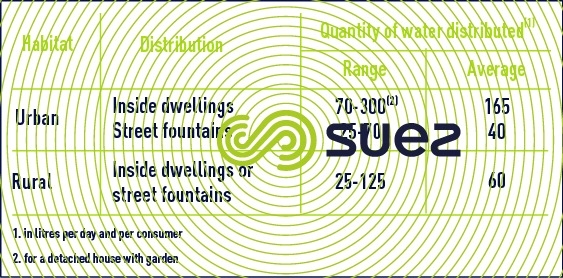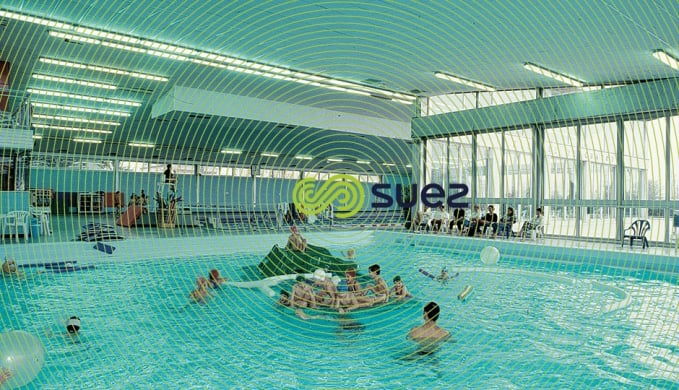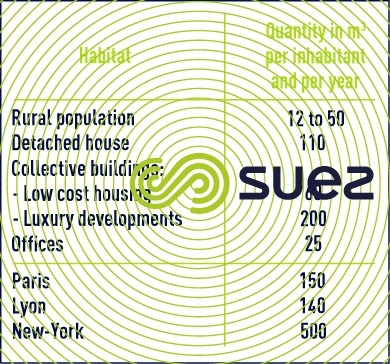quantities required
Reading time:It is acknowledged than Man consumes an average of 2.5 litres of water per day for drinking and cooking food. This amount depends on climactic conditions and can rise to 3 or 4 litres in hot countries but remains low compared to household water consumption. Household consumption can vary from a few litres per day in countries that have no public mains water supply and low household amenity levels up to several hundreds of litres per day in highly developed countries (table 7).



Table 8 will give the reader an idea of the amounts of water consumed by various household activities:






To these requirements, we need to add water consumed by tertiary users (offices, businesses) and by the various public services (schools, hospitals, swimming pools, street cleaning) where major amounts can sometimes be involved. Additionally, some industries also use mains water.
Finally, the water demand also needs to allow for the condition of the network and for losses recorded through that network. A network performance has been established; this performance is the ratio between the volume of water metered on the subscriber’s premises and the volume of water that leaves the plant. A good network will be at least 80% efficient.
In France, efficiency is less than 70% for 50% of networks; it is below 60% for 25% of networks. This results in an overall annual consumption of approximately 6 billion m³ or an average of 100 m³ per inhabitant per year or yet again, 275 L.(inhab.d)-1. Table 9 illustrates the variable nature of water demand depending on different dwelling conditions.



Bookmark tool
Click on the bookmark tool, highlight the last read paragraph to continue your reading later












